DIY tutorials
for Redesign
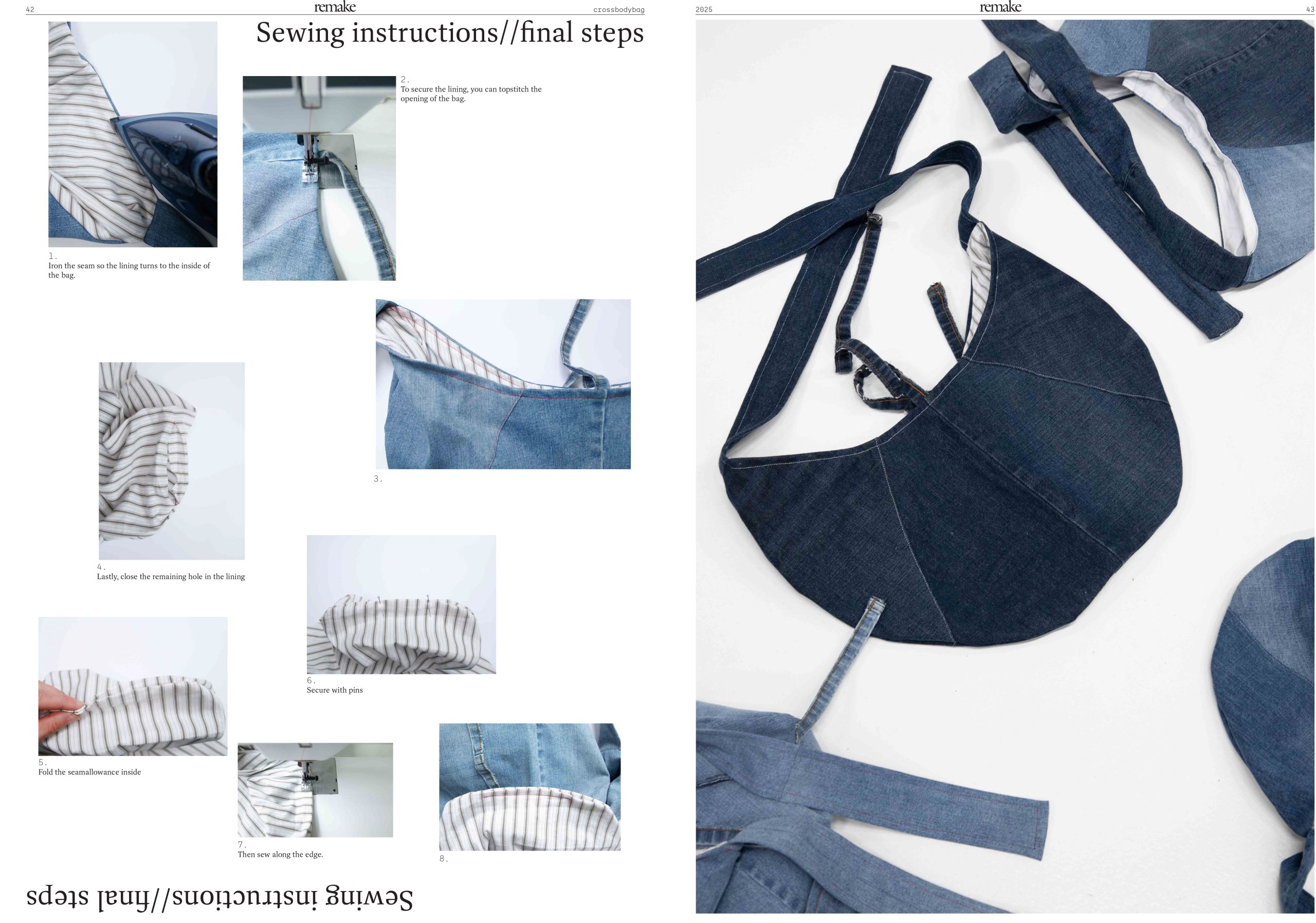
In this section we have compiled a series of downloadable DIY tutorials which instruct redesigning and remaking new garments from old ones. Redesign not only conserves natural resources but also provides a valuable hands-on experience and a sense of community. When second-hand clothes are renewed together—whether in workshops, courses, or among friends—shared experiences are created, bringing together people from diverse backgrounds. In a time when many experience isolation or a lack of community, clothing up-cycling can foster meaningful connections.
At the same time, we learn to appreciate the stories behind our garments. Every piece of knitwear, pair of jeans or shirt carries a history, and through redesign, it is given a new chapter. In this way, clothes become more than just everyday objects—they transform into unique and meaningful parts of our lives. This redefinition of material value is particularly important in advancing the circular economy.
‘REMAKE’ BY THEKLA WEISSKOPF
The product outcome of Thekla Weisskopf’s MA thesis in Creative Sustainability at Aalto University, Remake explores novelty in fashion through deconstruction and creation. In a world of material excess, it offers a quiet rebellion rooted in care, use, and transformation. My thesis aims to empower people to engage more deeply with their clothes, asking: How can instructional materials for remaking be designed? Through participatory research, it developed accessible, visual, and flexible guides to transform unused garments. By opening seams, cutting fabric, and reshaping forms, users gain skills and confidence—reconsidering what was once unused.

Remake: Novelty through deconstruction and creation
How to transform a pair of jeans into a cross-body bag and a men´s shirt into a blouse.
.
CHOSEN FOR REDESIGN DIY
The next set of tutorials emerged from the collaborative project ‘Chosen for Redesign’ between Emmy Secondhand and Aalto University.
Textile design student Saimi Parikka was inspired to develop techniques for reusing old knitwear. She developed reworking knitwear by unpicking the knitwear’s structure. Now she has put together six different tutorials (1-6) for this technique. These tutorials are particularly suitable for people who are already knitting enthusiasts, as they already have a basic understanding of how the stitches and the structure of knitwear work.
When the knitwear is modified by unpicking, it widens as the stitches are dropped and increases in length as the remaining stitches are loosened. This way, knitwear in size XS can be modified into knitwear in size M-L. The unpicked surface becomes slightly transparent and lacy. By unpicking, you can add detail to a garment or, if you treat the entire surface, you can completely change the design and look of the garment. Unpicking, like knitting, is a repetitive movement that can even feel meditative. It’s also inspiring to “destroy” a neat industrial knitted surface and challenge yourself to create an irregular, sprawling pattern. The reworking of clothes can increase the user’s appreciation for the life cycle of the garment and the work, which is crucial for promoting a sustainable consumer culture. Saimi hopes that these tutorials will encourage people to work together and share ideas.
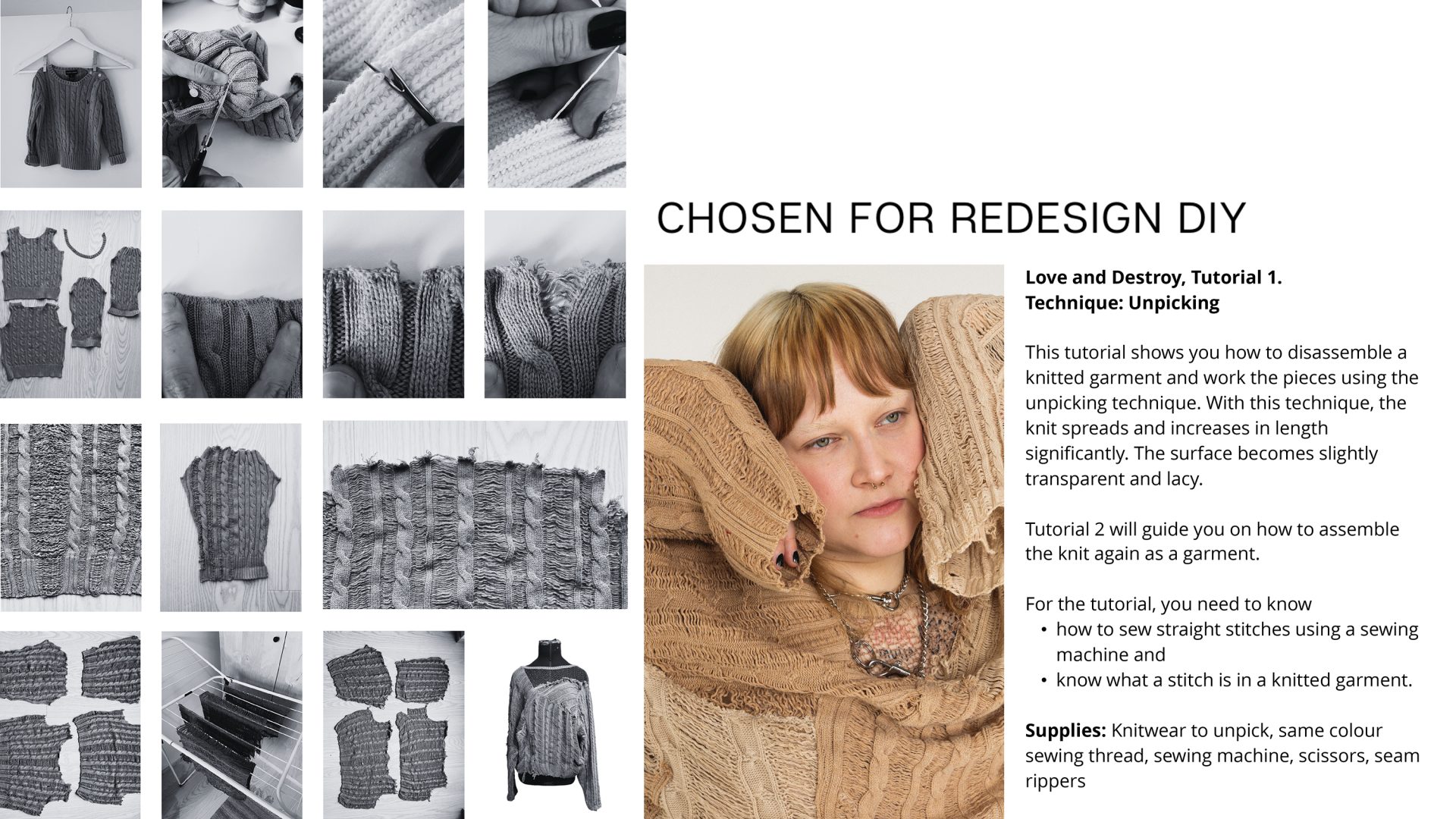
Tutorial 1: Love & Destroy
How to disassemble a knitted garment and work the pieces using the unpicking technique.
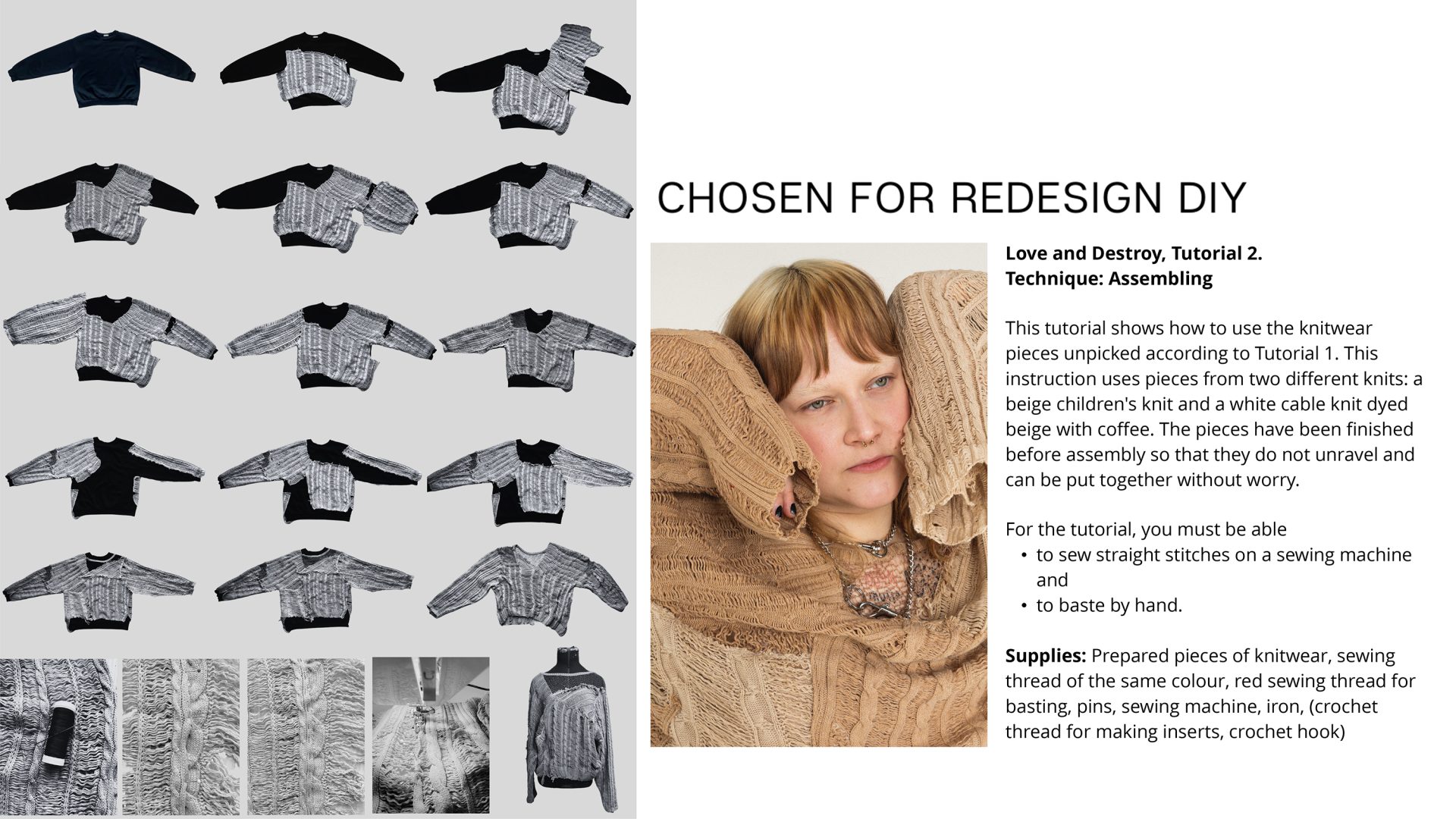
Tutorial 2: Love & Destroy
How to assemble the knitwear pieces unpicked according to Tutorial 1.
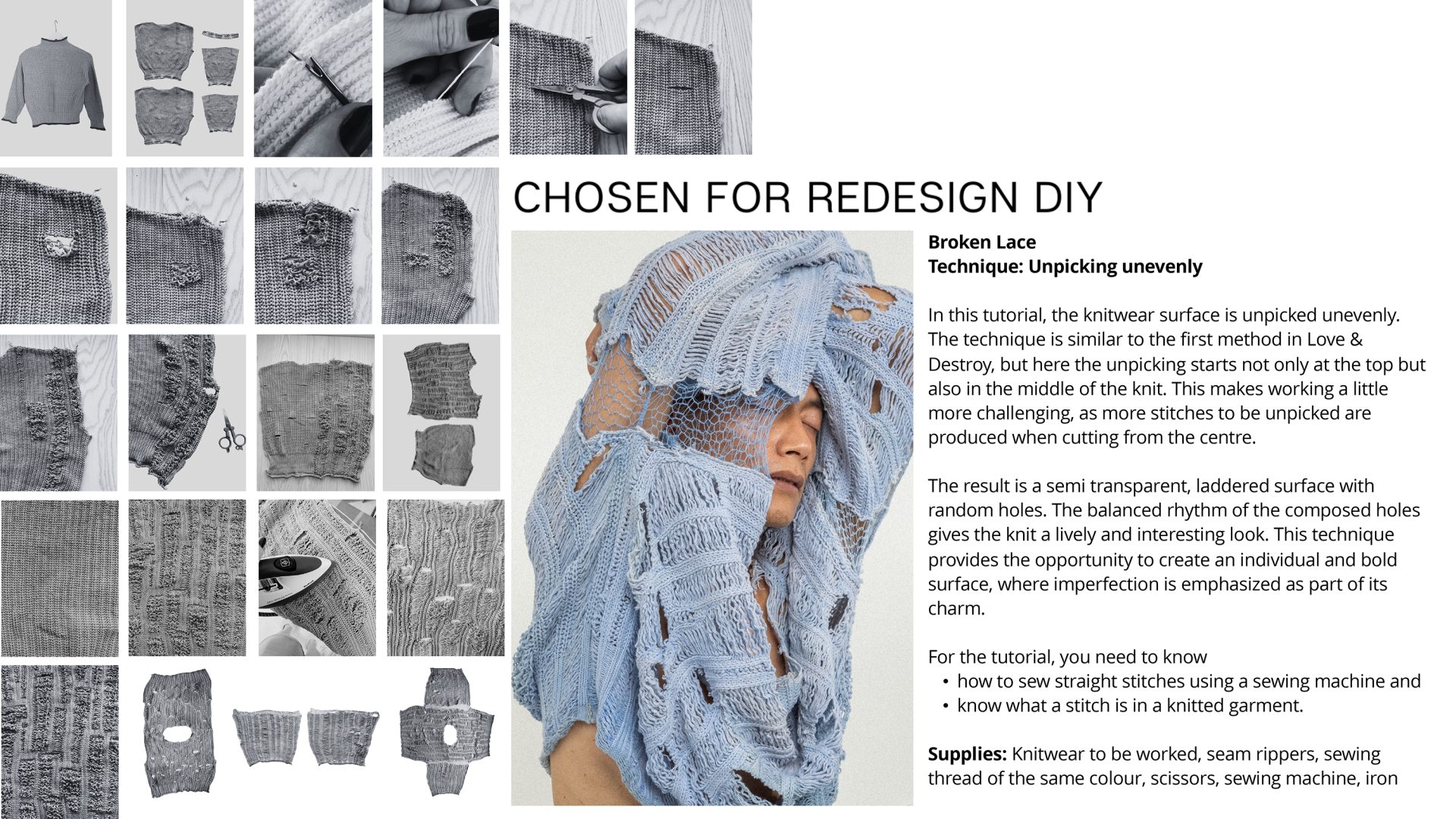
Tutorial 3: Broken Lace
How to unpick the knit surface unevenly.

Tutorial 4: Wrecked Cable Knit
How to disassemble a knit into parts, work the surface using the unpicking technique and add cable knits for detailing.
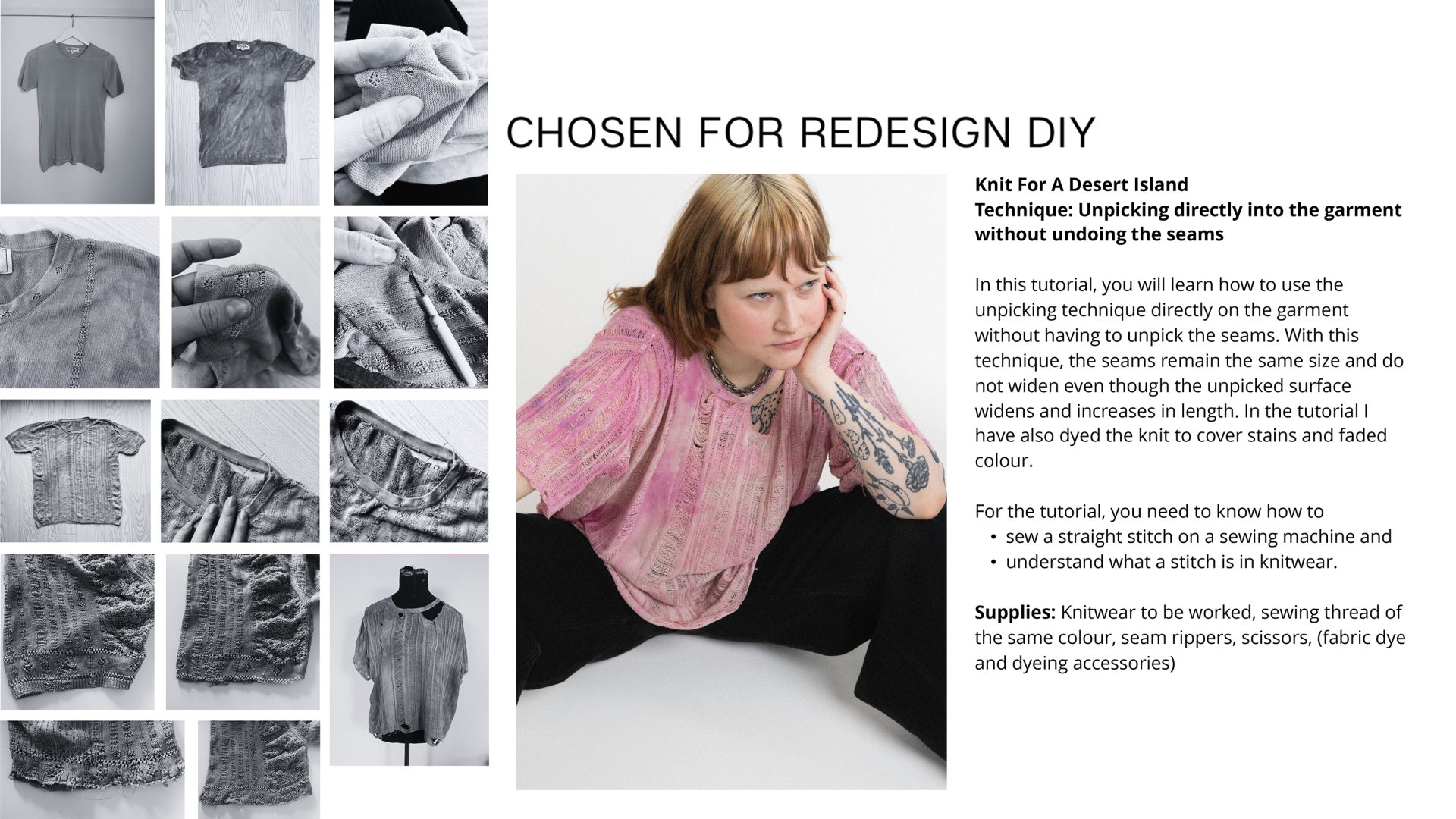
Tutorial 5: Knit for a Desert Island
How to use the unpicking technique directly on the garment without having to unpick the seams.
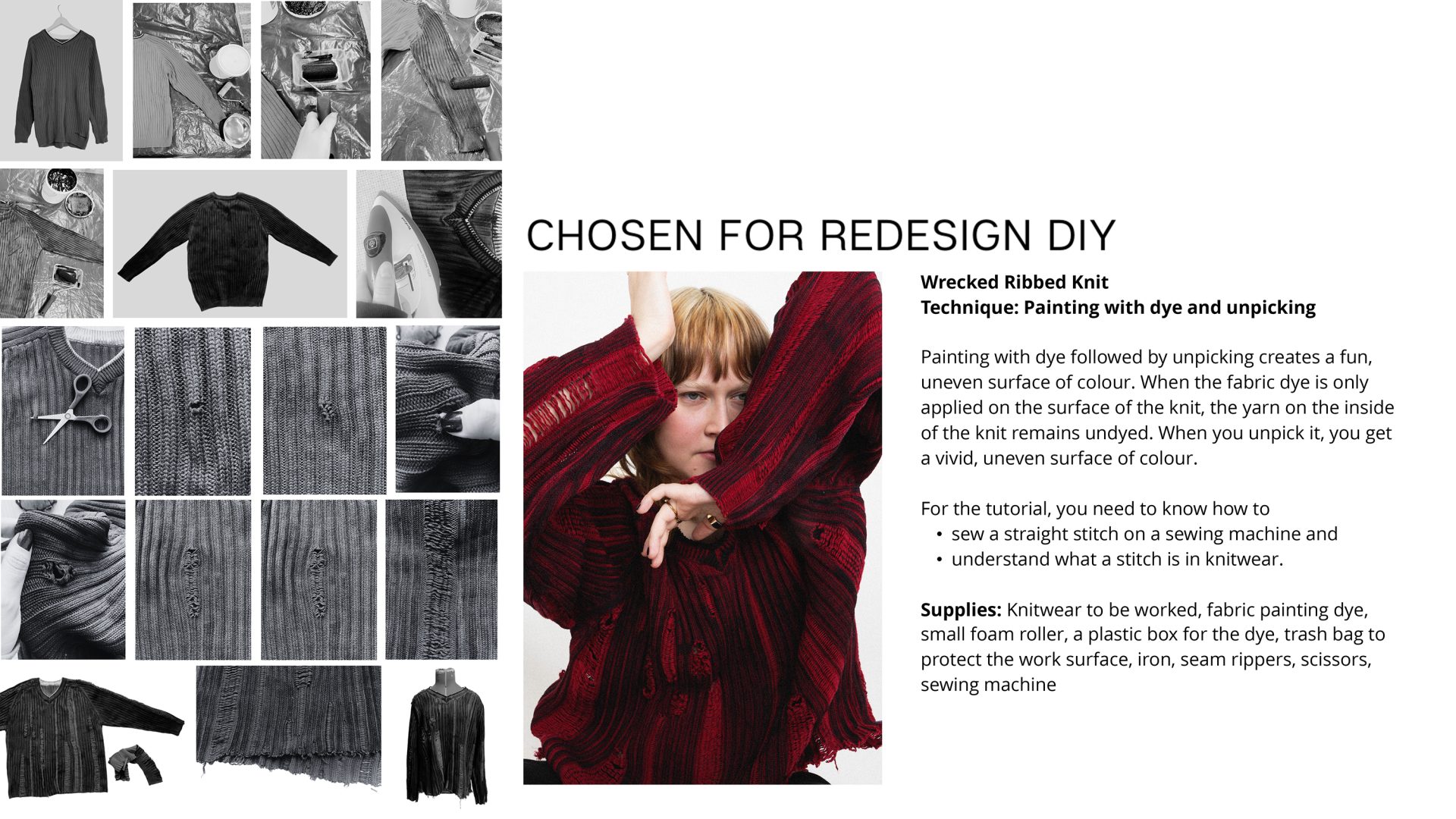
Tutorial 6: Wrecked Ribbed Knit
How to paint the knit surface with dye, followed by unpicking.
With more than 15 years of experience, master seamstress Paula Malleus-Lemettinen specialises in extending the life of jeans by repairing, developing, and testing upcycling techniques. According to Paula, old jeans can be turned into unique products that can also be mass-produced, saving water, energy and materials. She developed DIY tutorials (7-9) were developed for the production of creative jeans products.
Paula also emphasises the social dimension of redesign. “When we bring people together for workshops or projects, we can provide an opportunity to share ideas and learn from each other. Upcycling jeans is not only ecological, it also builds a sense of community and shared moments of success.” This is closely related to the model of expansive learning developed by Engeström (2001): learning in the community can open up new ways of understanding the meaning of sustainable development and practical ways of achieving it.
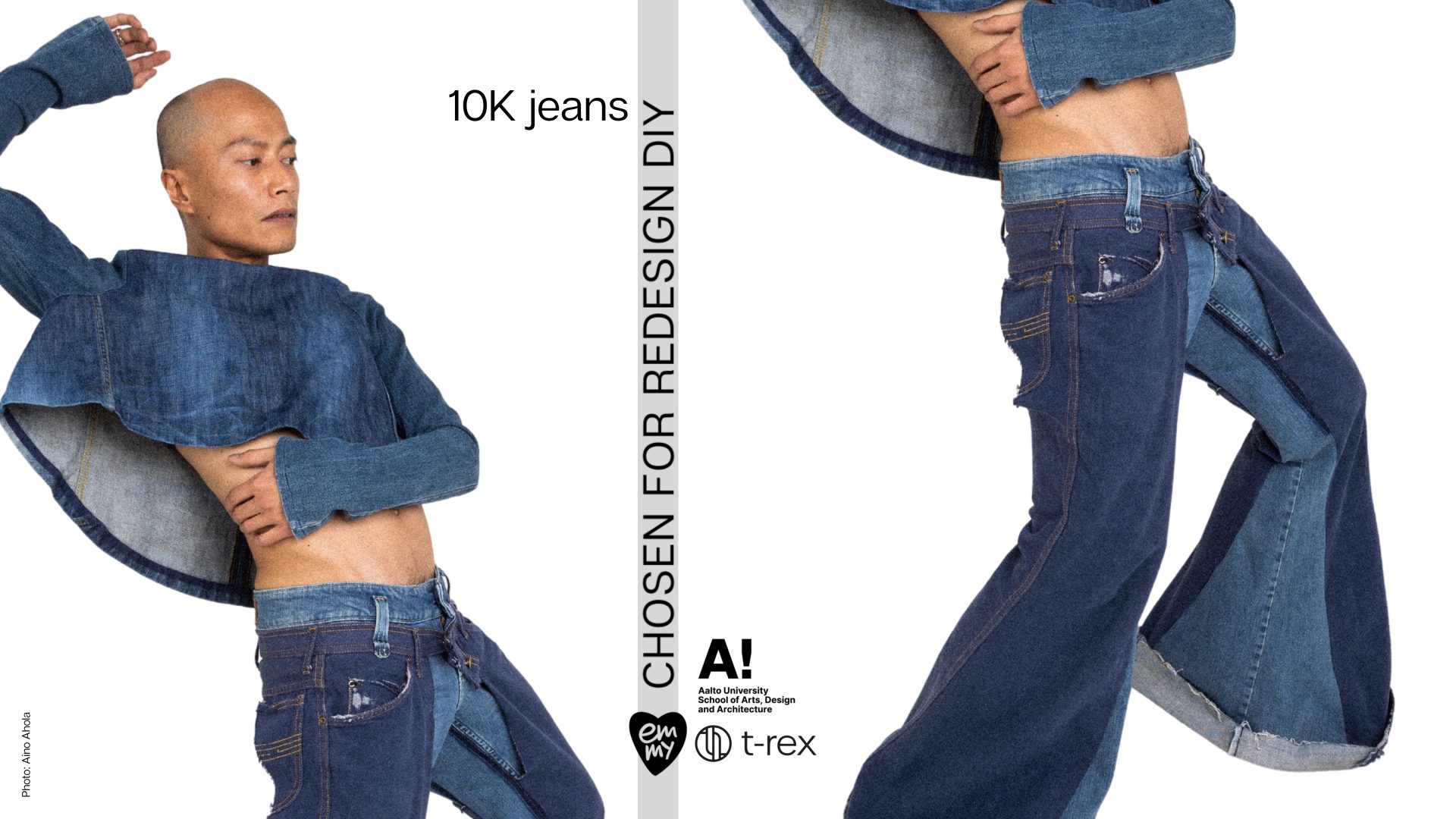
Tutorial 7: 10K Jeans
How to disassemble and combine two pairs of jeans in a new way.
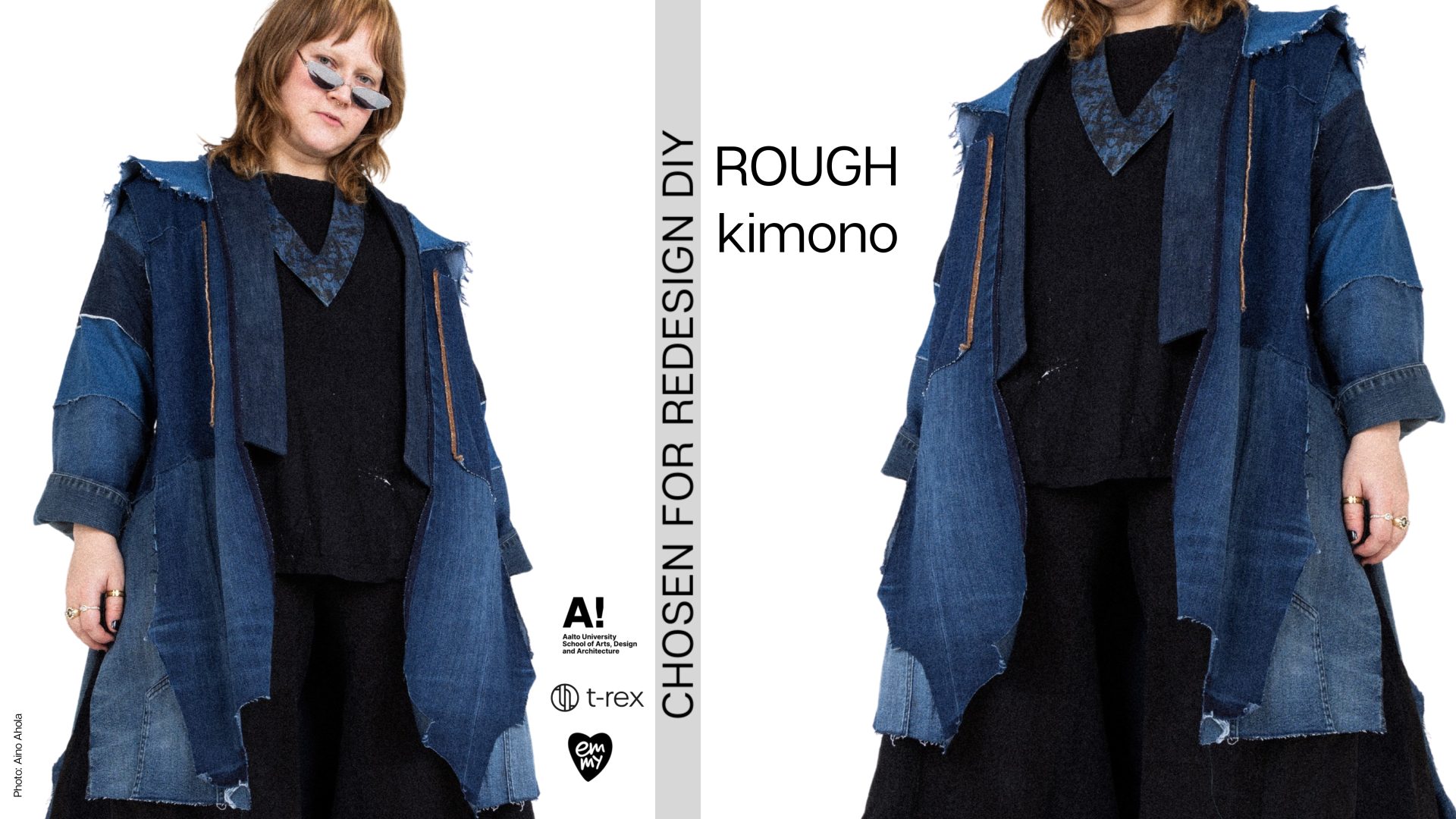
Tutorial 8: Rough Kimono
How to disassemble and combine different denim materials together to create a new product.
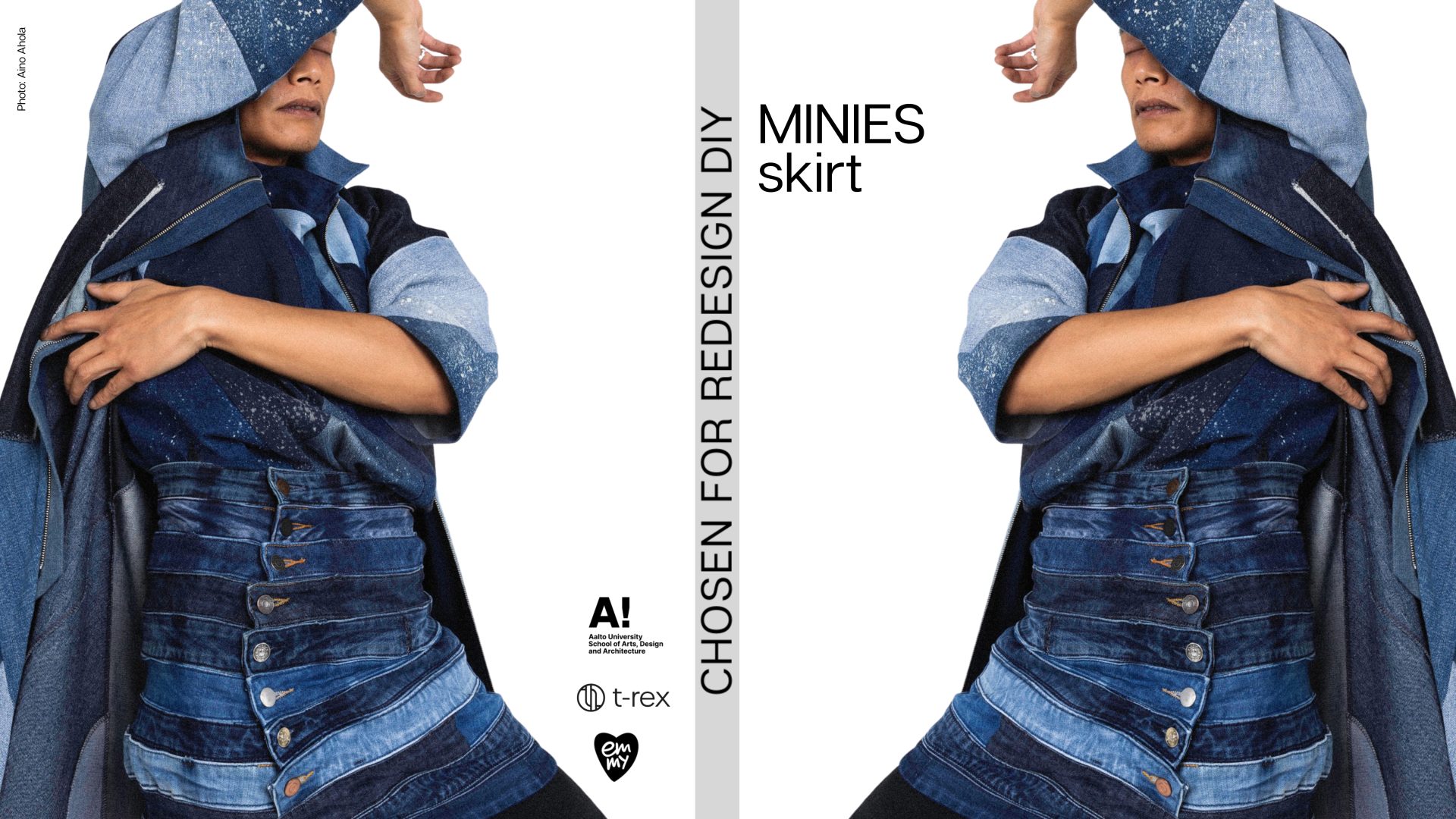
Tutorial 9: Minies Skirt
How to repurpose waistbands of jeans into a skirt.
Saimi and Paula demonstrate that sustainable fashion can be creative, personal, and collaborative. Modifying old knitwear and jeans offers a tangible way to reduce one’s carbon footprint while fostering creativity, interaction, and cooperation. So, dig out those forgotten knits and jeans and give them new life—perhaps with a little inspiration from Saimi and Paula!
